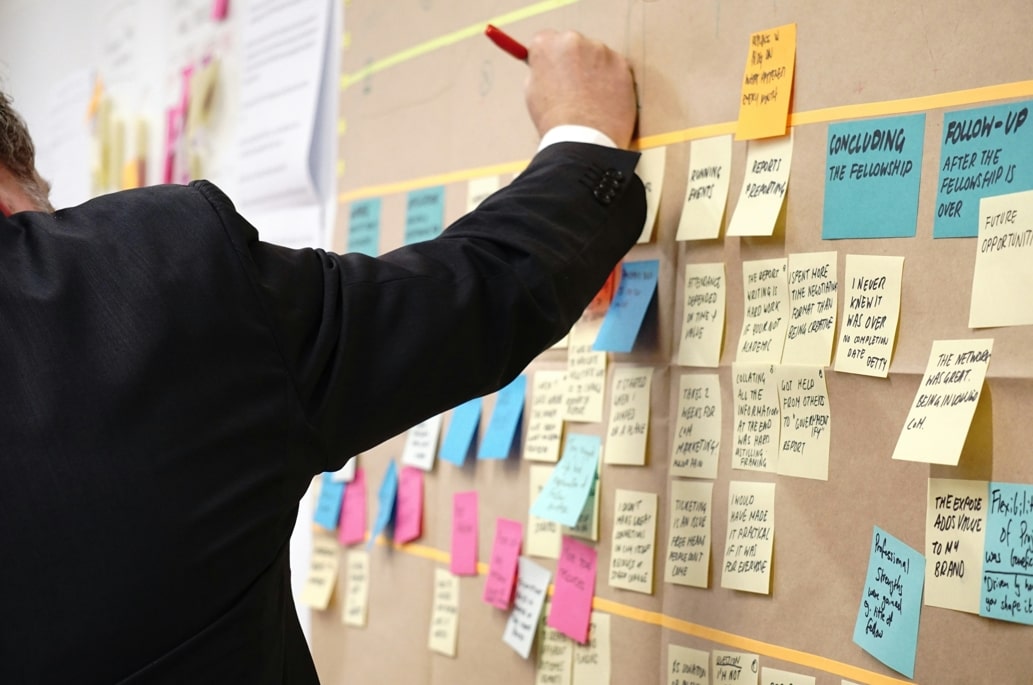الصراع هو الاحتكاك الذي يمنع محرك فريقك من العمل بسلاسة - ولكن ماذا لو كان بإمكانك تسخيره بدلاً من تركه يعرقل التقدم؟ لا تتعلق مهارات إدارة النزاعات بإخماد الحرائق فحسب، بل تتعلق بإعادة صياغة طريقة تفكير فريقك في الخلاف تماماً. في أماكن العمل الحالية التي تتسم بالتعاونية المفرطة في أماكن العمل اليوم، لا يعد تجنب النزاعات خياراً متاحاً - ولكن سوء إدارتها يكلف الشركات الأمريكية ما يقدر ب 359 مليار دولار سنوياً في الإنتاجية المفقودة وفك الارتباط والاستنزاف.
بالنسبة للمدراء، النزاع ليس خطأ في النظام - بل هو ميزة. ويكمن الفرق بين الفرق التي تنهار تحت وطأة التوتر وتلك التي تبتكر من خلاله في مجموعة مهارات حاسمة واحدة: حل النزاعات الاستراتيجية. لا يتعلق الأمر بأن تكون وسيطاً أو معالجاً (ضع كتاب ”كيف تكسب الأصدقاء“ جانباً). بل يتعلق الأمر بتفكيك الصدامات إلى رؤى قابلة للتنفيذ، وتصميم أطر عمل للاحتكاك الصحي، ومعرفة متى تتدخل ومتى تترك الفرق تصحح نفسها بنفسها.
في هذا الدليل، سنقوم بتشريح مهارات إدارة النزاعات غير القابلة للتفاوض للقادة العصريين، ومشاركة الاستراتيجيات غير البديهية التي تتجاهلها معظم برامج التدريب، والكشف عن كيفية تحويل الأدوات الصحيحة إلى سلاح سري لفريقك.
ما هي مهارات إدارة النزاعات
مهارات إدارة النزاعات هي الممارسة المتعمدة لتخفيف حدة الاحتكاك مع استخلاص القيمة من الخلافات. مهارات إدارة النزاعات هي مجموعة الأدوات التي يستخدمها القادة لتحديد الخلافات ومعالجتها وحلها قبل أن تؤدي إلى تآكل الثقة أو الإنتاجية أو معنويات الفريق. ولكن إليكم الأمر الحاسم: لا يتعلق الأمر بمحو النزاع. بل يتعلق الأمر بجعله يعمل لصالح فريقك وليس ضده.
فكر في الأمر على أنه صيانة نظام التشغيل للتعاون البشري. تشمل هذه المهارات ما يلي:
- قدرات التشخيص:تحديد ما إذا كان النزاع متجذرًا في سوء التواصل (على سبيل المثال، ملكية المشروع غير الواضحة)، أو المشاكل الهيكلية (على سبيل المثال، مؤشرات الأداء الرئيسية المتنافسة)، أو الاحتكاك بين الأشخاص (على سبيل المثال، أساليب العمل المتضاربة).
- أطر التدخل:ليس ”حل“ الخلافات، بل تنظيمها. مثال على ذلك: تنفيذ بروتوكول ”الاختلاف والالتزام“ للمناقشات الحادة.
- بنية الحل:بناء العمليات التي تحول حالات الجمود إلى قرارات (على سبيل المثال: ”إذا لم يتم التوصل إلى توافق في الآراء خلال 30 دقيقة، يقوم رئيس الوزراء بإجراء التصويت الفاصل“).
الهدف هو التوافق المثمر. فالفرق التي تخاف من النزاع تهدر طاقتها في الالتفاف حول التوترات، في حين أن الفرق التي تدير النزاع بشكل جيد تستخدم الخلاف لاختبار الأفكار. على سبيل المثال, اجتماعات ”براينت ترست“ في بيكسار إضفاء الطابع المؤسسي على ردود الفعل القاسية - ولكن بقواعد صارمة (لا غرور، والحلول اختيارية). والنتيجة؟ تصبح النزاعات مسرعات إبداعية.
لماذا هذا مهم للمدراء: نزاعات فريقك هي نقاط بيانات. ارتفاع في النزاعات حول المواعيد النهائية؟ ربما تكون عملية تحديد الأهداف لديك معطلة. نزاعات متكررة بين الأقسام؟ يشير إلى وجود هيكل حوافز غير متناسق. لا تعني إدارة النزاعات أن تكون حكماً، بل أن تكون مهندس أنظمة يستخدم الاحتكاك لتشخيص المشاكل الأوسع نطاقاً.
تدريب مهاراتك في إدارة النزاعات

إليك الحقيقة القاسية: معظم التدريب على حل النزاعات يفشل لأنه يركز على الاستجابة للنزاعات، وليس تحصين الفرق ضدها. فالقادة الجدد ليسوا ضحايا نزاعات فرقهم - بل هم غالباً ما يكونون مصدرها. أنت لا تدير النزاعات إذا كان أسلوب إدارتك يعتمد على أهداف غامضة أو قرارات غامضة أو حلقات تغذية راجعة غير متسقة. أنت تزرعها.
ما يحتاج القادة الجدد إلى عدم تعلمه
- البقاء على الحياد:نصيحة سيئة. غالباً ما تؤدي محاولة الحياد على مستوى سويسرا في النزاعات إلى تضخيم الاستياء. بدلاً من ذلك، قم بتدريب القادة على تسمية اللعبة:”الأمر لا يتعلق بسارة ضد مارك، بل يتعلق بالأولويات المتنافسة بين السرعة والجودة. دعونا نعيد تصميم سير العمل لاستيعاب كليهما.“
- التركيز على المشاعر:المشاعر مهمة، ولكن الإفراط في التركيز عليها يحول المدراء إلى علماء نفس هواة. علّم القادة أن يربطوا النزاعات بـ العمليات,وليس الشخصيات. مثال على ذلك: إذا تنازع فريقان على المواعيد النهائية، فقم بتشريح سلسلة الموافقات، وليس ”عدم تعاطفهم“.
- حل كل شيء بسرعة:إن فرض إصلاحات سريعة للحفاظ على الانسجام يولد التكرار. بدلاً من ذلك، قم بتنفيذ عمليات ما قبل الوفاة أثناء المشاريع: ”أين يمكن أن تتعارض الأولويات؟ ” ما هي بوابات القرار التي ستمنع الوصول إلى طريق مسدود؟
المهارات المهمة فعلاً للمدراء المعاصرين
- التأطير الوقائي:: Train leaders to set conflict protocols upfront. Example:
- Disagree and commit: When debates stall, anyone can say, “I disagree, but I’ll execute once a decision is made.”
- Red team rules: Assign someone to argue the opposition in critical meetings—depersonalizes conflict.
- Systemic triage: Teach leaders to diagnose whether a conflict is a process tumor (e.g., approvals bottleneck) or a values fracture (e.g., ethical misalignment). Each demands radically different interventions.
- Leverage asynchronous tools: Conflicts often explode in real-time meetings. Train leaders to use platforms (like your team management SaaS) to structure debates:
- Complaint → Solution protocol: Require employees submitting grievances to propose 1 actionable fix. Forces problem-solving over venting.
- Conflict Threads: Dedicated channels where disagreements are tagged with categories (Process? Priority? Personality?) to track patterns.
The real ROI of modern training
A 2023 Gartner study found teams using systemic conflict frameworks reduced recurring disputes by 67% and cut meeting times by 41%. Why? Because they stopped wasting hours “resolving” the same issues and started eliminating their root causes.
Conflict management isn’t about “handling” your team—it’s about redesigning how they collide. Invest in tools that turn clashes into structured data (hello, granular complaint tagging) and train yourself to see conflict not as failure, but as your blueprint for building better systems.
Conflict management skills that actually work
Let’s redefine the classics. Yes, communication and empathy matter—but how you apply them in a hybrid, fast-paced workplaces makes all the difference. Here’s how to upgrade traditional conflict management skills with modern execution:
Effective communication: Structure over “clarity”
Forget vague calls for “open dialogue.” Structured communication protocols prevent misinterpretation and defensiveness. Try:
- Mandatory context: Before debating, require parties to answer: “What’s your desired outcome?” and “What’s your biggest fear here?” (Psst: Build this into your team app’s conflict submission form).
- Pre-Scripted escalation paths: Example: “If this debate doesn’t resolve in 15 minutes, escalate to a silent async thread for 24 hours.”
Why It Works: Atlassian uses “communication blueprints” to predefine how teams debate priorities. Conflicts dropped by 40% because roles/rules were clear upfront.
Active Listening 2.0: Pattern hunting, not parroting
Active listening isn’t nodding while waiting to talk. Train leaders to:
- Code verbal cues: Track phrases like “This always happens” (process flaw?) or “I don’t feel heard” (power asymmetry?).
- Use data amplifiers: Example: If two teams clash over missed deadlines, visualize their workload in your team management tool. Often, conflicts dissolve when imbalances become objective.
Pro Tip: Managers at Zapier tag conflicts in their platform as “Recurring” or “One-off,” allowing them to prioritize systemic fixes over ad-hoc mediation.
See SMO in action
Try our solutions with zero commitment
Empathy with system awareness
Empathy isn’t a hug—it’s a diagnostic tool. Teach teams to ask:
- “What’s blocking you?” (focus on systems, not emotions).
- “What’s the win for both of us?” (align incentives).
- Use your SaaS tool’s sentiment analysis to flag frustration trends (e.g., recurring complaints about a client). Turns empathy from guesswork to strategy.
Problem-Solving: constraint as a catalyst
Instead of brainstorming free-for-alls, impose innovation boundaries:
- The “Braintrust Method”: Borrow from Pixar—no decision-maker in the room during debates. Reduces power plays.
- “Fix It Forward”: Require teams to resolve conflicts by proposing a documented process tweak (track these in your team app’s knowledge base).
Positive attitude: Conflict as a KPI
Reframe “positivity” as measurable progress. Example:
- Publicly celebrate when a team resolves a conflict and improves a workflow. Example: “Team A’s debate over vendor budgets cut onboarding costs by 15%—learn how here.”
- Use your platform’s kudos system to reward employees who convert friction into solutions.
A step-by-step guide to conflict resolution

Modern conflict resolution is a diagnostic protocol—think of it as surgery for team dysfunction. Here’s how to dissect issues methodically, sidestep pitfalls, and engineer solutions that stick:
Locate the core issue
Don’t ask: “What’s the problem?” (You’ll get surface-level gripes.) Do this: Use the 5 Whys x 5 Levels framework:
- Ask “Why did this happen?” five times, and map answers across five levels: Individual → Team → Process → Leadership → Culture.
Example: - Surface complaint: “Mark keeps missing deadlines.”
- Core issue: Teams are incentivized for speed (bonuses) but penalized for errors (reviews), creating conflicting KPIs (Process/Leadership layer).
Investigate objectively
Drop: Biased 1:1 interviews.
Adopt: Blind data gathering:
- Collect written statements via your team (anonymize if needed).
- Audit related workflows (e.g., pull project timelines, communication logs).
- Use sentiment analysis tools to quantify emotional tones in past discussions.
Map boundaries
Define three zones:
- Negotiable: “Can we adjust deadlines if we deprioritize Feature X?”
- Non-negotiable: “Client contracts require Security audits—no exceptions.”
- Hidden landmines: Unspoken norms (e.g., “We never challenge the VP’s ideas”).
Choose your role
Your management style must adapt to the conflict type:
- Sniper mode: For urgent, high-stakes clashes (e.g., client escalations). Action: Decide fast, explain later.
- Coach mode: For skill/communication gaps. Action: Facilitate dialogue but let teams draft solutions.
- Architect mode: For recurring/systemic issues. Action: Redesign workflows (e.g., automate handoffs in your team app to prevent “ownership” conflicts).
Reconvene with a game plan
Structure the conversation like a product launch:
- Pre-Meeting async prep: Share data summaries, boundary maps, and goal proposals via your team app.
- The 20-minute rule: If no resolution in 20 minutes, pause and:
- Assign homework: “Revise proposals with [specific data].”
- Trigger an app-based vote if deadlocked.
- Post-meeting action: Document decisions and dissent in the app’s conflict log. Example: “Sarah agrees to timeline but notes bandwidth concerns.”
Test, iterate, close the loop
- Set a 14-day review checkpoint in your team app.
- Measure success via metrics (e.g., task completion rates, sentiment scores).
- If the fix flops, iterate without blame: “This didn’t work—what’s our pivot?”
After resolving a conflict, automate its prevention. This is lean methodology applied to conflict. By treating disputes like product bugs (locate, patch, test), you stop recycling the same issues. And by baking solutions into your team’s OS (via your management platform), you turn managers into innovators, not firefighters.
See SMO in action
Try our solutions with zero commitment
Conflict management isn’t a skill—It’s a system
No manager wakes up craving workplace drama. But conflict isn’t optional—it’s baked into collaboration. The difference between teams that drown in disputes and those that surf them to innovation isn’t charisma. It’s structure.
You don’t need another seminar on “active listening.” What you need is a blueprint to:
- Prevent recurring clashes by redesigning workflows, not just refereeing fights.
- Turn complaints into code—automating fixes so problems solve themselves.
- Measure conflict like a KPI (because if you’re not tracking friction, you’re tolerating it).
This is where the right tools transform theory into action. Imagine a team management platform that:
- Lets employees flag issues before they boil over, with structured templates requiring actionable solutions (no vague venting).
- Analyzes conflict patterns to spotlight broken processes (e.g., “65% of disputes link to understaffed shifts—reassign headcount”).
- Automates mediation protocols (like escalating deadlocked debates to async decision boards).
That’s productivity—filtering chaos into clarity.
If you’re ready to stop babysitting disputes and start engineering teams that resolve them, explore SMO—the only team management SaaS built to uncomplicate conflict. Design custom resolution paths, automate post-mortems, and turn every clash into a catalyst for growth.

